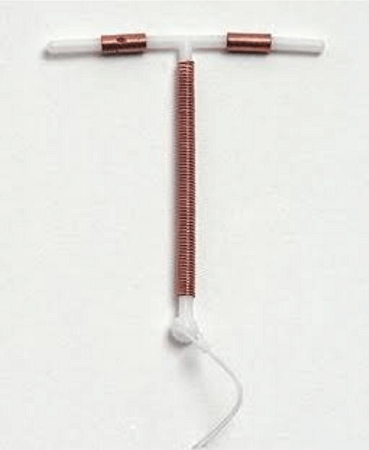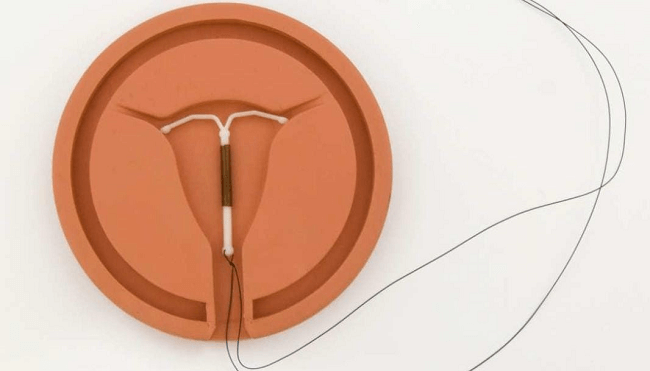What is the full form of IUDIUD: Intrauterine DeviceIUD stands for Intrauterine Device. It is basically a type of Contraceptive method which resist pregnancy. Its shape is like T and its length is approximately 32 mm to 36 mm. 
This T-shaped device is implanted inside the woman's uterus to prevent pregnancy, among many birth control devices or contraceptive devices IUD's (Intrauterine Device) result is more satisfactory among its users. There is a 99.5% success rate of IUD (Intrauterine Device) devices in preventing pregnancy. This IUD (Intrauterine Device) device gives more impressive results among adolescents and also among those who did not have babies earlier. If an IUD (Intrauterine Device) user removes its IUD (Intrauterine Device) after a long time using it even then also the user can gain its fertility back. IUD (Intrauterine Device) devices have a failure rate of approximately 0.78% among its user in comparison with other contraceptive methods. It is also the best choice among emergency contraceptives if it is used within 4 days of unprotected sex. IUD (Intrauterine Device) devices have no side effects for breastfeeding or any sort of hormonal imbalance noticed among its users. IUDs can be implanted even after delivery and also after abortion. HistoryThe first ever IUD (Intrauterine Device) was made in the early 1900s. Richard Richter developed the first IUD (Intrauterine Device) which was made from the intestine of the silkworm but this time people did not use it. Ernst Grafenberg a German Physician invented the first ever ring-shaped IUD (Intrauterine Device) which was made of silver filaments. However, his invention was not accepted during Nazi rule because at that time opting for the Contraceptive method was considered a threat to the Aryan women. Ernst Grafenberg later moved to the United States and carry on his invention. His colleagues H. Hall and M. Stone continued his invention after Ernst Grafenberg's death and created the world's first stainless steel IUD (Intrauterine Device) and named it Hall Stone Ring. Also, in 1960 Hormonal IUD (Intrauterine Device) was invented, initially, the goal was to resist the increased menstrual bleeding that is associated with copper and inert IUDs (Intrauterine devices). In China, the state health service uses the IUD (Intrauterine Device) contraceptive method to resist or limit the increased birth rate in the country. In the year 1980 to 2014, 325 million women were forcibly implanted with an IUD (Intrauterine Device). The women who refused to insert this IUD (Intrauterine Device) were deprived of using the public school for their kids and also, and lost their government jobs, the IUD (Intrauterine Device) implanted inside the women was not easy to take out if a women want to remove her IUD (Intrauterine Device) then the only way of removing it was a surgical method. This was done to Implement the 2-child policy in China and if the parents want to remove their IUD (Intrauterine Device) then they have to pay a certain amount of fine to the government. IUD (Intrauterine Device) removal is only allowed to those women who are not able to continue the use of IUD (Intrauterine Device) for some health reasons and also if they want to do a second baby. Only in this case, the parents are allowed to remove IUD (Intrauterine Device). Different Brands of IUD (Intrauterine Device)There are mainly 5 different brands of IUD (Intrauterine Device) that are used among the users and also these are FDA-approved.
There are mainly 2 types of IUD (Intrauterine Device) that are Hormonal IUD (Intrauterine Device) and copper IUD (Intrauterine Device). Mirena, Kyleena, Liletta, and Skyla are Hormonal types of IUDs (Intrauterine devices). Copper IUD (Intrauterine Device) is called ParaGard in the United States. Paragard IUD (Intrauterine Device) does not have Hormones. It is wrapped inside a copper wire which helps to prevent pregnancy for up to 12 years. Copper IUD (Intrauterine Device) and hormonal IUD (Intrauterine Device) prevent the Sperm to move to the female Fallopian tube by resisting its mobility. In the case of the ParaGard IUD (Intrauterine Device), it resists the movement of Sperm by releasing copper, sperm does not like copper and as a result, the ovary is not fertilized and the user prevents from being pregnant. Mirena, Kyleena, Liletta, and Skyla IUD (Intrauterine Device) prevent a user from being pregnant in two different ways they are;
IUD (Intrauterine Device) used as Emergency ContraceptionThe Paragard, Mirena and Liletta IUDs (Intrauterine Device) work superbly in case of emergency usage if a couple has unprotected sex, then within 5 days of it if the woman implants IUD (Intrauterine Device) inside her then there is a 99% chance of preventing pregnancy. The most exciting feature of these IUDs (Intrauterine Devices) is that they help prevent pregnancy for about 12 years. Who can use these IUDs (Intrauterine devices?)This IUD (Intrauterine Device) is very effective in preventing pregnancy or birth control, although it is not safe for all women to use this IUD (Intrauterine Device) contraceptive method.
If a woman is suffering from Wilson's disease or has an allergy to copper then it is not safe for the user to use IUD (Intrauterine Device). 
Best time for implanting IUD (Intrauterine Device)
When to take medical advice from a doctor regarding IUD
Next TopicFull Form
|
 For Videos Join Our Youtube Channel: Join Now
For Videos Join Our Youtube Channel: Join Now
Feedback
- Send your Feedback to [email protected]
Help Others, Please Share










